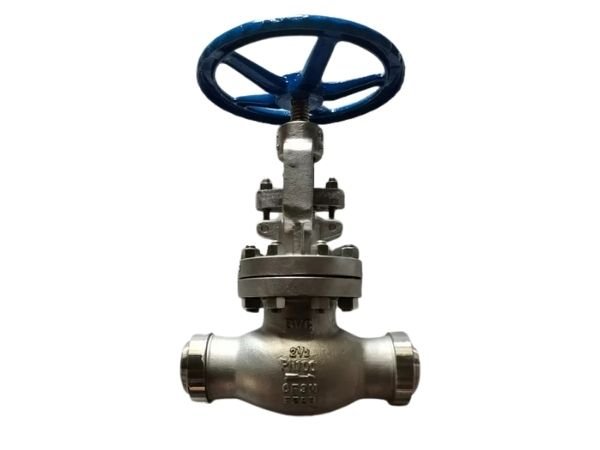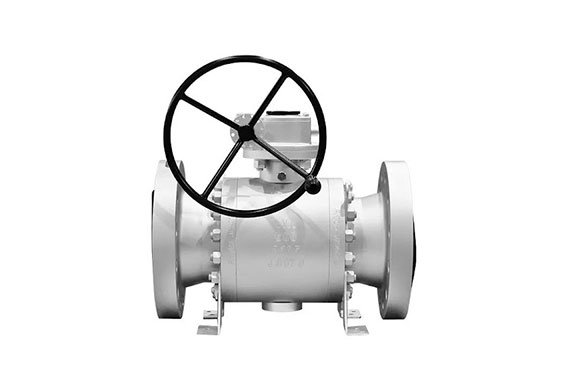If you are looking into your plumbing, or industrial system, you might see two possibilities, gate valves and ball valves. Firstly, this division that has unique characteristics for use in other purposes. But what criteria do you have to select the right one for your application?
In this post, we are going to go through all the differences between gate valves vs ball valves, the pros and cons of each and we will see the situations that each performs best. From complex industrial piping systems to simply installing a new home piping system, you will come away knowing what you need to make educated purchasing decisions.
What Are Gate Valves?
Gate valves are made for controlling the flow of a liquid or gas by tapping or lowering a gate within the valve body. The gate moves vertically up or down to either shut off flow of the line or to allow flow. This valve is perfect for applications where full shutoff is needed.
Key Features of Gate Valves
Design:
Gate valves are available in two designs – rising-stem and non-rising-stem types.
Rising stem:
The stem of the valve is clearly apparent when moving up or down and is used as an indicator of whether the valve is open or closed.
Non-rising-stem:
The stem stays immobile; hence, it is excellent for narrow locations.
Flow Control:
Offers low restriction when fully open.
Material:
Usually made of stainless steel, bronze, or cast iron for long-lasting operation in high-pressure environments.
Advantages of Gate Valves
Minimal Pressure Drop: The full open gate retracts fully, ensuring a good flow.
Longevity: Gates valves can be endured by circumstances of high pressure and high temperature.
Cost-Effective: Generally less expensive than ball valves for large-scale applications.
Disadvantages of Gate Valves
Slow Operation: Requires multiple turns to open or close, making it less suitable for quick shutoff.
Not Fit For Throttling: Sustained use will generate turbulence and wear, which can cause the valve to fail prematurely.
Debris Problems: Lumps will form inside the valve body, generating inaccuracy problems.
Learn more about the various types of gate valves and their specific uses.
What Are Ball Valves?
Ball valves, at the same time, use a hollow, ball-sized component to manage the flow of items. By 90 degrees turning the handle, the ball rotates, either to make the hole aligned with the pipeline (Open) or blocked (Closed). These valves are designed to rapidly operate and have low leakage.
Key Features of Ball Valves
Quick Shut Off: Works with a simple 1/4 turn, it is very efficient.
Tight Sealing: Provides a leak-proof seal, even in high-pressure or corrosive environments.
Small Size: Perfect for those applications with confined space.
Advantages of Ball Valves
Easy to Use: Needs little or no training to use it.
Very Durable: Endure wear and tear, under high pressure, high temperature systems.
Low Petrochemical Fluid chemical Maintenance: Having fewer plant process and parts, ball valve need less routine service.
Disadvantages of Ball Valves
Not Suitable for Throttling: Like gate valves, ball valves should not be used for part flow because the throttling could damage.
Higher Cost: Typically more expensive upfront than gate valves.
Freezing Risk: Ball valves will freeze in very cold climates.
Discover the best ball valves for industrial and residential use.
Gate Valves vs. Ball Valves: Side-by-Side Comparison
Gate valves are perfectly suited to conditions, which could require a tight shut off, this has been made possible since gate valves are restricted to this purpose only. Still, ball valves are appropriate for fast and effective shut off purposes which makes them quite suitable for regular usage. The gate valves typically need several rotations to open or close while the ball valves only need a quarter turn, for convenience.
In terms of endurance, again gate valves and high-pressure systems and, conversely, ball valves have high endurance ratings once used and maintained consistently. In the aspect of sealing, while gate valves have fair sealing action, ball valves are the best with their enhanced tightness and negligible leakage. Another significant difference is cost; Gate valves are relatively cheaper than ball valves, although the latter are comparatively costly in the initial stages but are cost-effective in the long run.
Comparison Chart
| Feature | Gate Valves | Ball Valves |
|---|---|---|
| Flow Control | Best for full shutoff | Best for quick shutoff |
| Ease of Operation | Requires multiple turns | Operates with a quarter-turn |
| Durability | Handles high-pressure environments | Long-lasting with minimal wear |
| Sealing | Moderate sealing capabilities | Superior tight sealing |
| Cost | Generally more affordable | Slightly higher upfront cost |
Applications of Gate Valves and Ball Valves
When to Use Gate Valves
Municipal Water Systems: Perfect for handling large volumes of water with minimal resistance.
Industrial pipelines: Often utilized in the oil and gas sector on account of their strength.
Utilities: Common use for high pressure steam systems.
When to Use Ball Valves
Residential Plumbing: Ideal for quick shutoff in home water systems.
Chemical Pipelines: Offers leak-tight sealing for detrimental substances.
Irrigation Systems: Used in agriculture for precise water flow control.
Learn how to choose the right valve for industrial applications.
Maintenance Tips for Longevity
Ensuring your valves remain in good shape has a significant impact on it’s performance and longevity.
Gate Valve Maintenance
Check for debris that can hang up the gate.
Use the lubricant on the stem on a regular basis to stop it sticking.
Signs of heavy corrosion or wear are present.
Ball Valve Maintenance
Open the valve occasionally to avoid the valve, so it is not hard.
Check the seals and replace them when necessary.
Use throttling by the valve for wear prevention.
To find out more about exploring, check out our valve maintenance checklist.
Call-to-Action: Consult Us for Expert Guidance!
Deciding between gate valves and ball valves may present itself as a challenging decision, but you do not have to make a decision by yourself. Let our professional staff assist you to identify the suitable valve for a particular application whether for industrial uses, home, or any other need.
For further information concerning the benefits of our services, or if you are interested in booking Slavik for your organization or event, please feel free to contact us for a free consultation or a quote. Please do not skip on subscribing to our newsletter in order to be updated with the valve technology and other information.
Conclusion
There has been a debate between gate and ball valves which means that these two types have their special uses and benefits. Now that you are aware of the features, advantages and short comings of each you are now in a position to make a better decision.
Need more guidance? Get in touch with us today!

